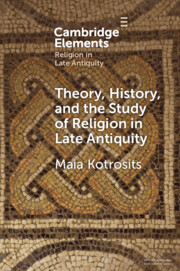Element contents
Theory, History, and the Study of Religion in Late Antiquity
Published online by Cambridge University Press: 19 January 2023
Summary
- Type
- Element
- Information
- Online ISBN: 9781009025560Publisher: Cambridge University PressPrint publication: 09 February 2023
References
- 3
- Cited by



